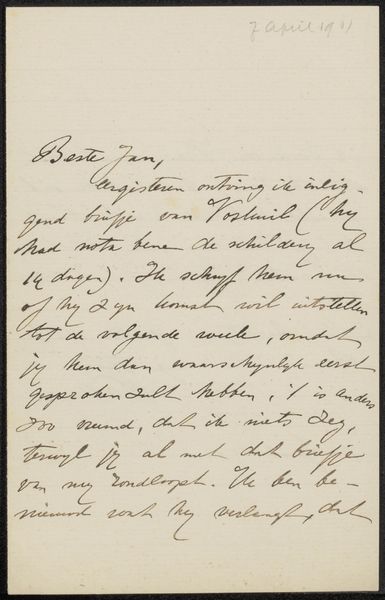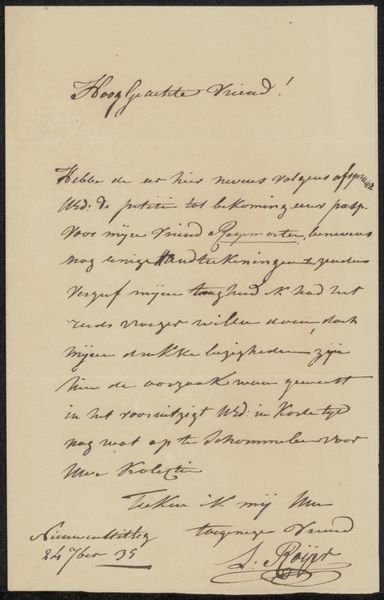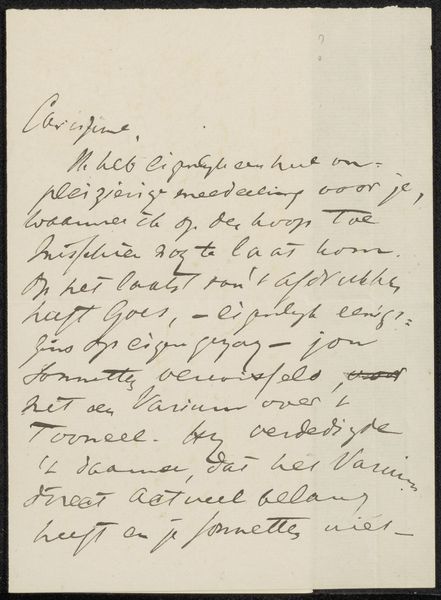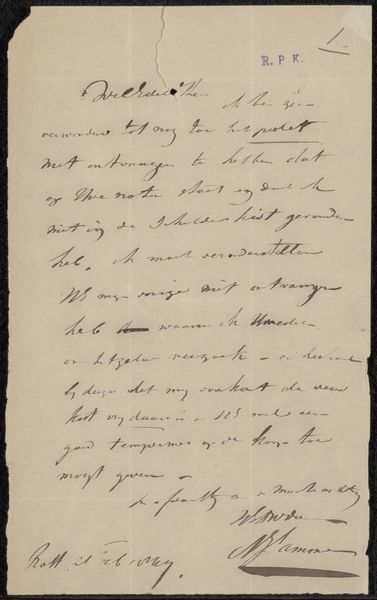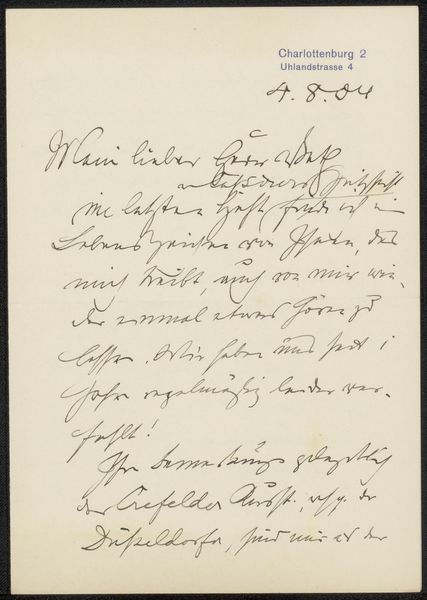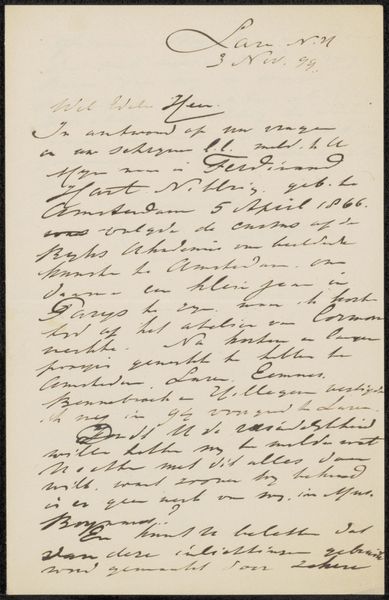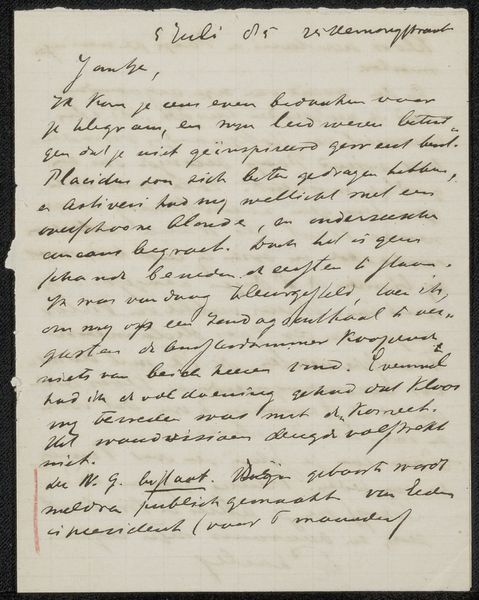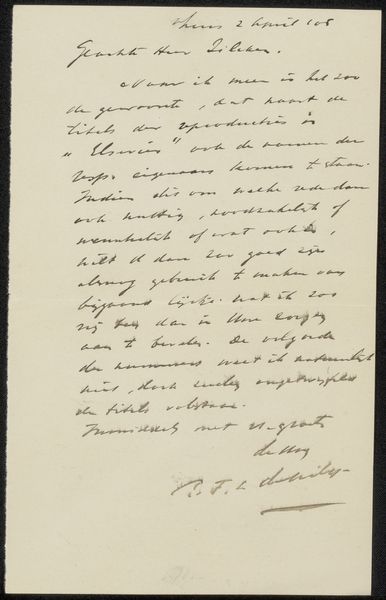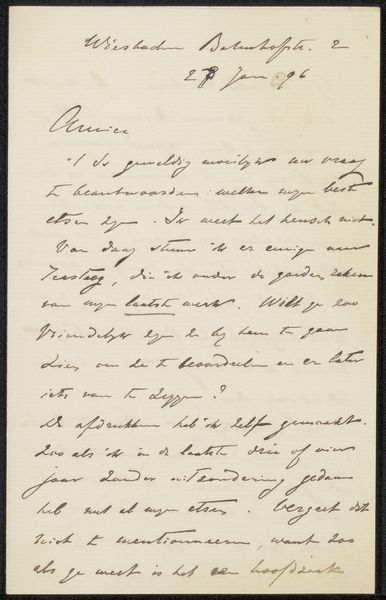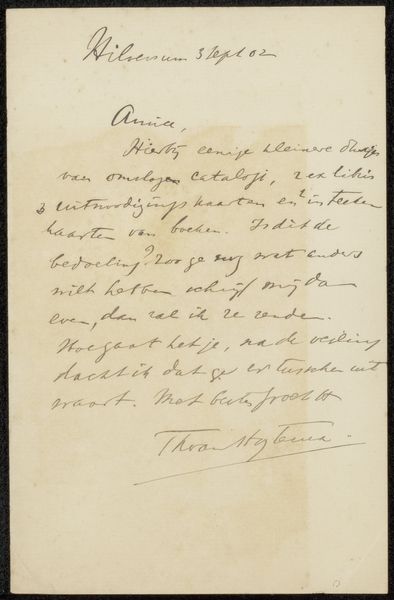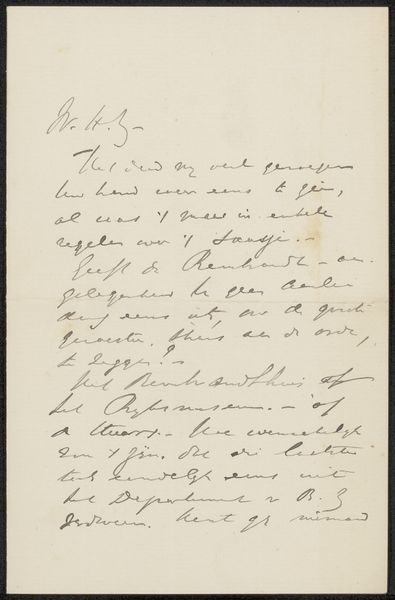
drawing, paper, ink, pen
#
portrait
#
drawing
#
pen sketch
#
old engraving style
#
hand drawn type
#
paper
#
personal sketchbook
#
ink
#
hand-drawn typeface
#
ink drawing experimentation
#
pen-ink sketch
#
pen work
#
sketchbook drawing
#
pen
#
sketchbook art
Copyright: Rijks Museum: Open Domain
Curator: What strikes me immediately is the fragility of this letter. It's so delicate, you can almost feel the anxious tremor in the handwriting. Editor: Yes, it does have an emotional pull, doesn't it? What we're looking at here is titled "Brief aan August Allebé," or "Letter to August Allebé," attributed to Rudolf Stang, possibly penned sometime between 1890 and 1899. The artwork is a drawing in ink and pen on paper currently held at the Rijksmuseum. Curator: A letter. So personal, right? Almost a glimpse into the soul. I wonder what they talked about? Why has it survived all this time? It feels strangely voyeuristic, like we shouldn’t be reading someone else's mail! Editor: Well, Rudolf Stang wrote this letter to August Allebé on June 9, 1890 to apologize, because he was sick and won't be able to work. And these types of correspondence give us a peek behind the curtain of art history. We tend to idealize artists, forgetting they lived ordinary lives dictated by health, finances, professional obligations. Seeing it in ink on paper normalizes it a little. Curator: You are right! But knowing what the text is doesn't dampen that feeling, I still imagine an intense conversation behind the lines. All those old-style flourishes feel really intimate! Editor: Indeed, and look closely at the quality of line – it varies dramatically from bold, confident strokes to thin, scratchy ones. You see Stang grappling with the very act of creation, it mirrors perhaps how challenging his job actually was at the time. Curator: Yes! Like a mood ring of the soul or an abstract emotional drawing instead of just being something factual! I imagine someone feeling every word as they pressed pen to paper… Editor: I see your point, in a time long before emails or texts, handwritten letters must have been very precious as tangible expressions of relationship and trust. As artifacts, such items carry stories and emotions of their time across into our own age. Curator: So in a way, something very fragile became a piece of stone cast far into the future to splash us with feelings all this time later. Lovely. Editor: Indeed, Rudolf Stang’s letter to August Allebé not only serves as a personal account of its time, but invites the viewer to reflect on these enduring traces of the everyday.
Comments
No comments
Be the first to comment and join the conversation on the ultimate creative platform.


